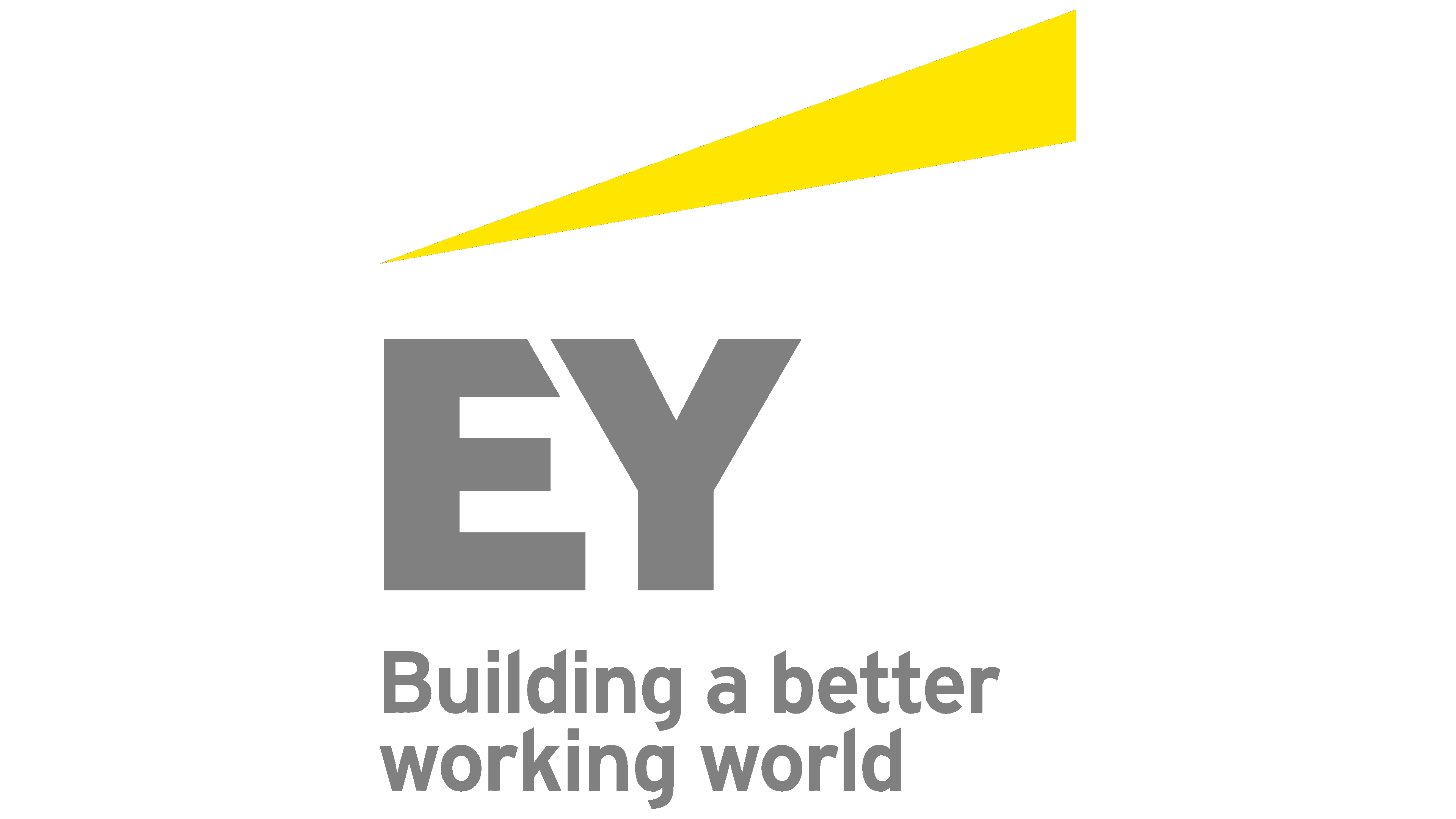Ernst & Young Logo
Ernst & Young (EY) is a global leader in assurance, consulting, tax, and advisory services. With operations in over 150 countries, it primarily serves numerous sectors including finance, energy, and technology. EY’s vast clientele comprises both private enterprises and public organizations. As one of the “Big Four” accounting firms, it plays a pivotal role in the world of international finance and business. The company operates as a network of member firms, each of which is a separate legal entity. While individual member firms oversee their operations, the global EY organization sets overarching standards and strategies.
Meaning and history
Ernst & Young (EY) boasts a rich legacy that dates back to the 19th century, founded on the endeavors of ambitious accountants in separate parts of the world.
In the late 1800s, A.C. Ernst founded Ernst & Ernst in Cleveland, while, across the Atlantic, Frederick Whinney established Whinney Smith & Whinney in London. Their ventures grew independently, emphasizing integrity and sound business practices.
Fast-forward to the mid-20th century, these two entities crossed paths. In 1979, Ernst & Ernst joined forces with Whinney Smith & Whinney, forming Ernst & Whinney. This merger marked one of the earliest instances of major international collaboration among accountancy firms.
Meanwhile, another powerful duo was emerging. Arthur Young & Co. and the Scots firm Broads Paterson & Co. had begun their operations in the early 1900s. As they expanded, their paths merged in 1989 with Ernst & Whinney, leading to the birth of Ernst & Young.
Throughout the years, EY has stayed true to its commitment to delivering quality, even as the financial landscape evolved. In response to the ever-changing global market, EY underwent a rebranding in 2013, adopting “EY” as its official global moniker and introducing a new logo and brand positioning.
While ownership and branding have seen transformations, EY’s foundational principles remain unchanged. Operating as a network of member firms, each entity retains its legal distinction, while collectively they present a united front, driving excellence in assurance, advisory, tax, and transactions.
In the current era, EY continues its legacy as a trusted global leader in the financial and advisory domain, reflecting over a century of innovation, growth, and unwavering commitment to quality.
1989 – 2013
The initial design showcased multiple textual elements. Predominantly, the brand name took center stage, spanning the emblem’s uppermost section. “Ernst & Young” was presented in a sleek, slanted sans-serif font, characterized by a delicate balance of thin and thick line work. Despite all being in uppercase, the “E” and “Y” stood out due to their amplified size.
These two letters further inspired the emblem’s graphic symbol, positioned to the left. This distinctive mark fused the capital letters, with the “E” manifested as three equidistant horizontal bars. Following this, the “Y” took shape using a right-angled figure coupled with a broad vertical line. Beneath this composition, the motto “Quality in Everything We Do” echoed the primary font’s style. A classic black hue adorned the entire design, making it prominently discernible against a pristine white backdrop.
2013 – Today
The present-day emblem epitomizes Ernst & Young’s inclination towards minimalism. Post-rebranding, the condensed “EY” became its focal point, symbolizing the revamped identity of the renowned audit and advisory firm. Adopting this abbreviation was a pragmatic move, streamlining brand recognition for clientele amidst a sea of financial market competitors. To emphasize its prominence, the letters “E” and “Y” are rendered with substantial height, breadth, and weightiness. This design choice echoes the firm’s ambition: securing the top position in its industry.
While the contemporary Ernst & Young insignia is hailed as forward-thinking, it hasn’t escaped critiques. Some designers argue it leans too much into generic aesthetics. Its design, to some, mirrors emblems from the transport or tech sectors rather than a distinguished audit and consulting institution. Validating these critiques, Business Insider labeled it as the least commendable within the financial sphere, placing it nearly at the bottom in their 2013 list of less successful corporate revamps.













